It’s thin, it’s light, and it’s as fast as most gaming laptops.
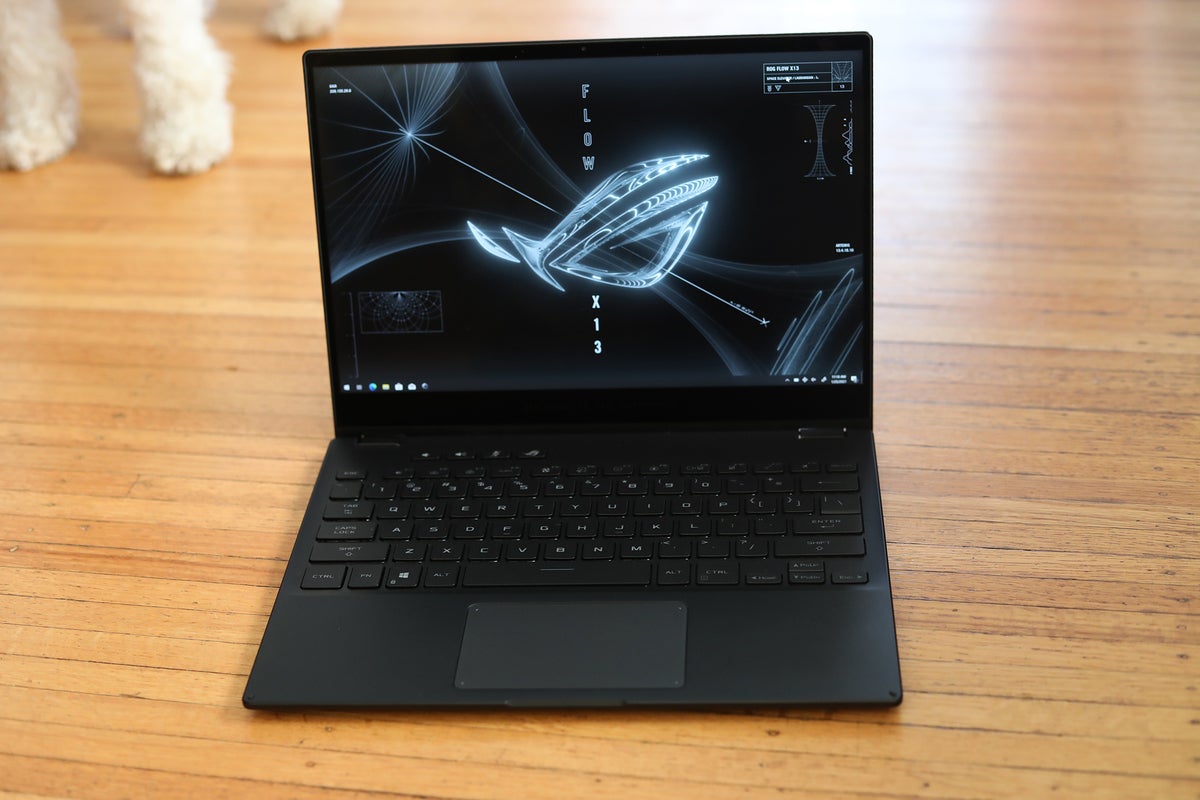
Gordon Mah Ung
Today’s Best Tech Deals
Picked by PCWorld’s Editors
Top Deals On Great Products
Picked by Techconnect’s Editors
Show More
The Asus ROG Flow X13 is a laptop that breaks all the conventions. It looks like a typical ultraportable, but its CPU performance rivals or surpasses that of many laptops twice its weight. And while most thin-and-light laptops make serious sacrifices in performance, the ROG Flow X13 is actually one of the fastest gaming laptops in town.
If all this sounds great, we have two caveats. First, this unique take on a thin and powerful laptop does come with a few compromises, which some will gladly accept in exchange for its impressive performance and versatility. Keep reading before you decide whether the ROG Flow X13 laptop is the one for you. But second, even if you do accept the compromises, good luck: The bundle we tested, which is $2,800 from Asus, is currently sold out, as is the laptop alone (without the eGPU), which would be $1,500 from Asus if you could actually buy it. Sigh.
This review is part of our ongoing roundup of the best gaming laptops. Go there for information on competing products and how we tested them.
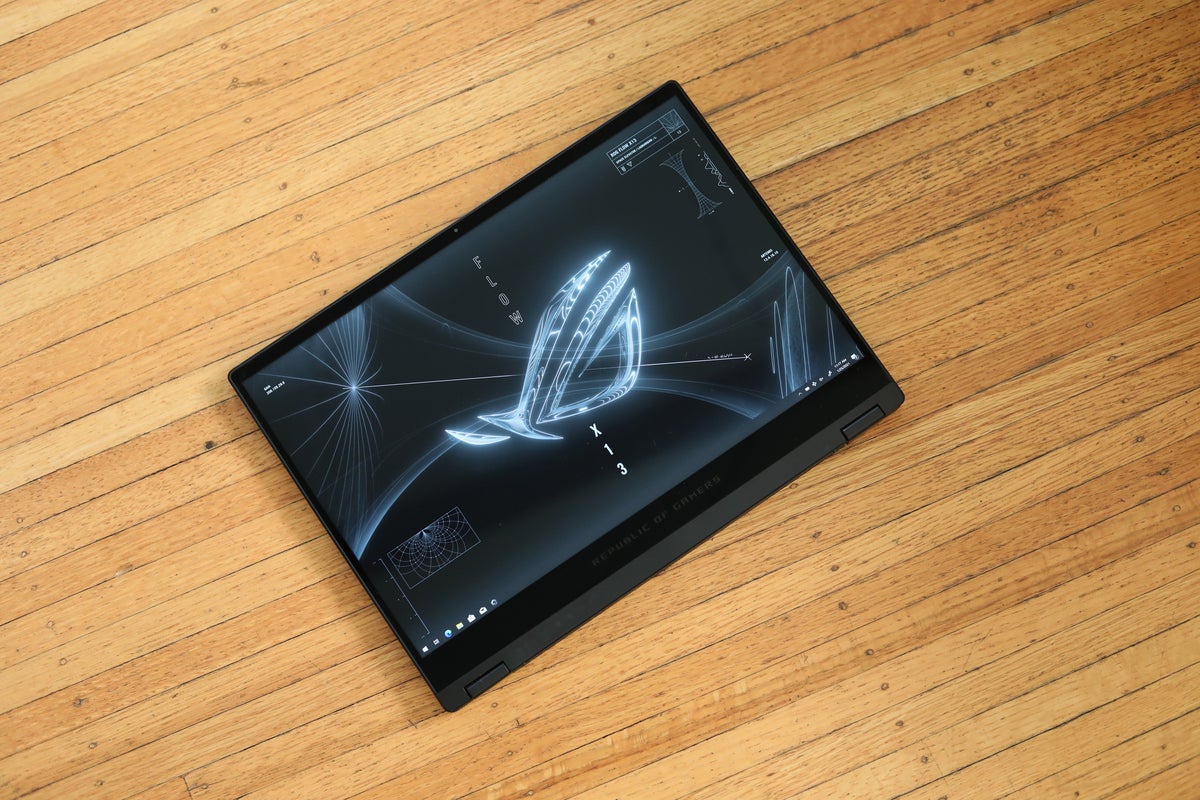 Gordon Mah Ung
Gordon Mah UngThe Asus ROG Flow 13 is a convertible tablet that can surpass far larger gaming laptops in CPU and GPU performance.
The secret of the ROG Flow X13 comes down to two elements. The first is the Ryzen 9 5980HS CPU, which is AMD’s flagship Ryzen 5000 chip based on its Zen 3 cores. Our review of the Ryzen 5000 laptop CPU is actually based on the performance of the ROG Flow X13. Built on a superior 7nm process, the Ryzen 5000 (and Ryzen 4000) have made it possible to get more cores into a smaller body without the thermal issues we’ve come to expect from prior generations. We saw this last year with the Asus ROG Zephyrus G14, but that laptop’s 3.5-pound frame meant only a midrange GeForce RTX 2060 Max-Q could be used.
The second element is the GPU—and we’re not talking about the GeForce GTX 1650 Max-Q inside the chassis. For those times when you want more graphics performance, Asus created the XG Mobile, a custom GeForce RTX 3080 eGPU. Most eGPU cabinets you’re probably seen have been about the size of a shoebox, but the XG Mobile is simply tiny at 8 x 6 x 1 inches. The weight of the XG Mobile is truly portable too, at two pounds. We’ll get more into the external graphics later, but it truly lets you pack amazing powerful graphics in your bag if you need it.
Asus ROG Flow X13 specs and features
It’s truly amazing what Asus managed to fit into the slender ROG Flow X13. Here are the specs for our eGPU bundle:
- CPU: AMD 8-core Ryzen 9 4980HS
- GPU: Internal Nvidia GeForce GTX 1650 Max-Q and external GeForce RTX 3080 @150 Watts
- RAM: 32GB LPDDR4X/4266 in dual-channel mode
- Screen: 13.3-inch, 3840×2400 touchscreen with 16:10 aspect ratio
- Storage: 1TB WD SN530 NVMe SSD
- Networking: Intel Wi-Fi 6 AX200, RealTek USB GbE on eGPU
- Dimensions: 11.75 x 8.75 x 0.62 inches
- Weight: The laptop itself weighs 3 pounds, and the power brick, 1 pound. The eGPU weighs 2.1 pounds.
- Right-side ports: Power button with fingerprint reader, one USB-A, and one USB-C
- Left-side ports: HDMI 2.0, audio jack, eGPU port (x8 PCIe Gen 3), USB-C
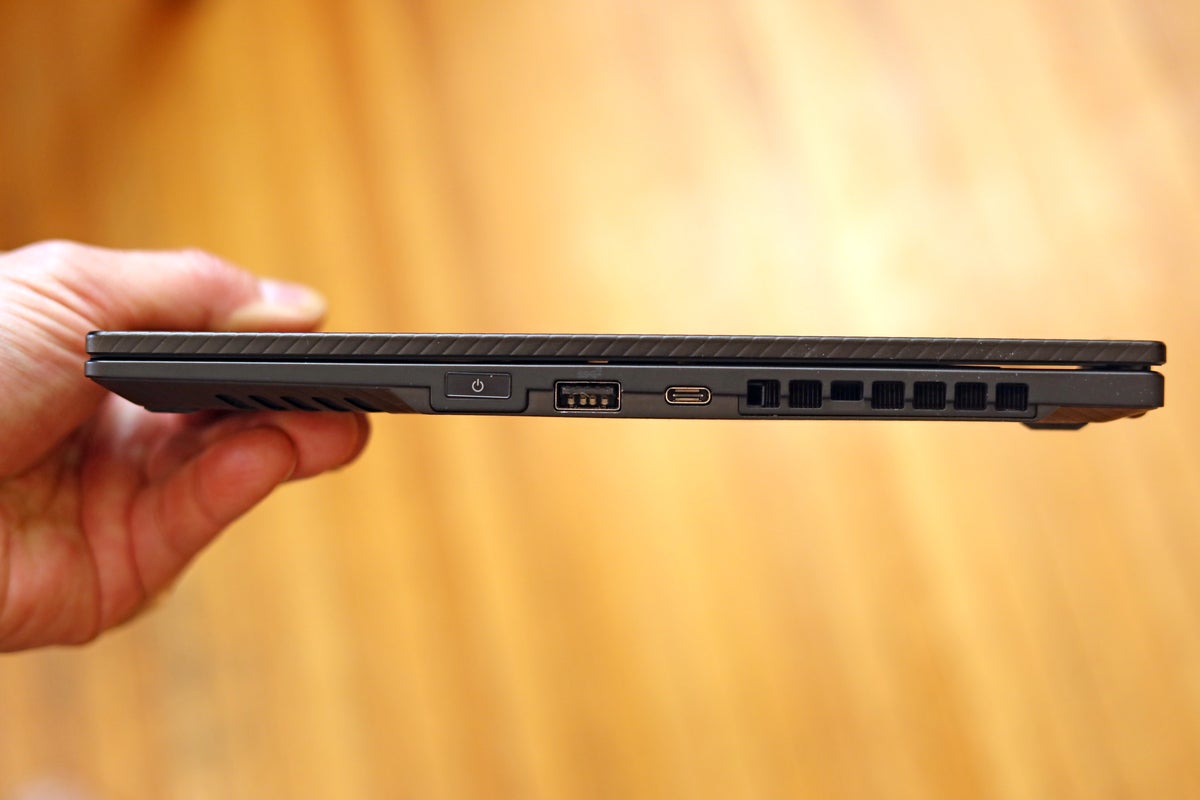 Gordon Mah Ung
Gordon Mah UngThe laptop features a power button with integrated fingerprint reader as well as USB-A and USB-C on the right side.
The left side of the laptop includes a larger port near the rear that is the dedicated port for the eGPU, which connects to the cabinet at x8 PCIe Gen 3 speeds. You may not see it, but it also features a USB-C port that can be used for charging and data transfer when the eGPU isn’t plugged in.
 Gordon Mah Ung
Gordon Mah UngThe left side of the ROG Flow X13 features a proprietary x8 PCIe connection for the eGPU, a full size HDMI 2.0 port, and analog headset jack.
In the next picture below you can get a better view of the port, which comes with a simple ROG-branded rubber cover that we can almost guarantee will be lost within the first 10 minutes of using the laptop. We’d prefer a sturdier cover if there’s going to be one, but in all honesty we’ve never jammed debris in our HDMI or USB-C ports, so maybe they’ll be OK anyway.
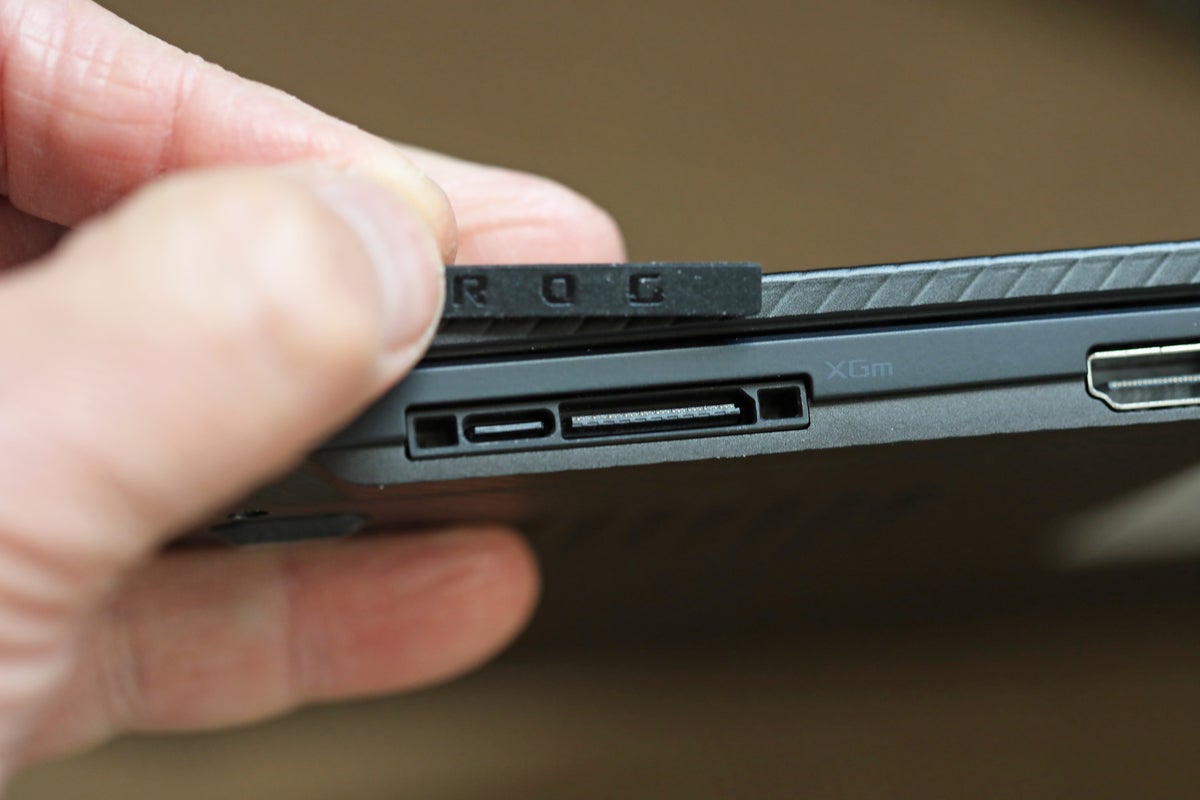 Gordon Mah Ung
Gordon Mah UngA rubber cover on the eGPU port is held in place by friction and will likely be easily lost.
Mouse, keyboard and speakers
The keyboard has reasonable travel, and we were generally satisfied with it. The backlighting is solid white. We didn’t find any poorly placed keys, but there is a microphone-off button that should probably include an LED to confirm whether you’ve shut off the mic.
The gaming nature of the ROG Flow X13 shows up with the function keys, which feature dual purposes. In most ultraportable laptops, the secondary function for keyboard backlight, mute, or screen backlight control is on by default, while most gaming or content creation laptops default to function keys for apps or games. The ROG Flow X13 goes with the latter, which may annoy someone who doesn’t want to press the function key to change the screen brightness.
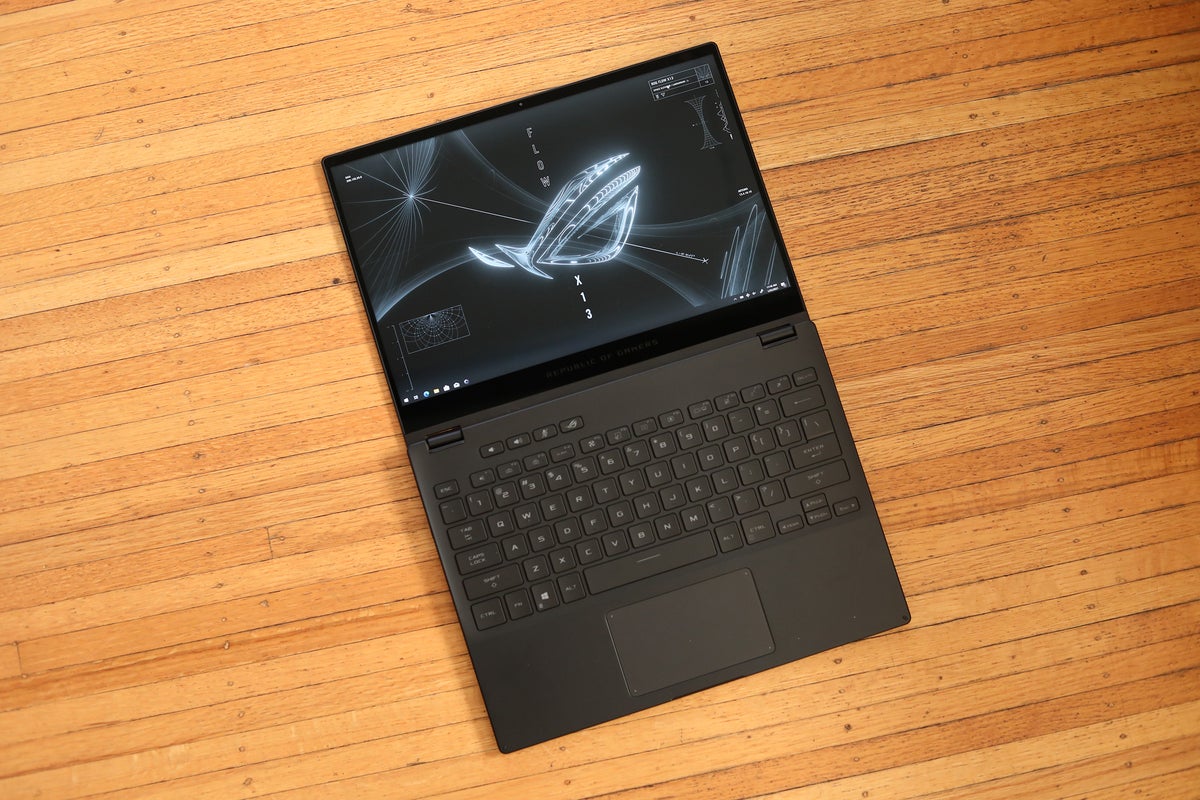 Gordon Mah Ung
Gordon Mah UngWe have no major complaints about the keyboard and trackpad on the ROG Flow X13.
The trackpad features a carbon-fiber look to match the keyboard deck and is Microsoft Precision-complaint. We found it fairly smooth and had no complaints inside of the operating system. Using it to move in the UEFI was twitchy, but that won’t matter to most.
The speakers on the ROG Flow X13 are about average for an ultraportable–adequate in the middle range, sketchy on the bass. That may seem like faint praise, but the sound quality of the average thin gaming laptop is even worse. Consider this basically an improvement.
Build quality
The ROG Flow X13’s overall build quality is nice. The aluminum-clad laptop has a generally solid feel with a pleasant industrial texture on the lid, bottom panel, and keyboard deck. It is a fingerprint magnet, though.
We also want to mention the use of rubber bumpers on the corners of the keyboard deck. They are designed to keep the keyboard from getting too close to screen. We’ve seen such nubs tear off in the past, though, and these thin, tall ones (about 0.75mm over surface) seem vulnerable.
All about the XG Mobile eGPU
Besides the Ryzen 5000 CPU, Nvidia’s GeForce RTX 3080 is the other star of this show. Sure, compared to the RTX 3080 desktop it’s a slight letdown, but it’s also completely unrealistic to expect identical performance from the laptop version of any GPU, let alone the monster that is the GeForce RTX 3080.
What’s new about the RTX 3080 mobile version is the vendors’ ability to vary the power usage from 80 watts to 150 watts. For the XG Mobile, Asus uses the 150-watt variant, which has so far been eclipsed only by a 155-watt version we’ve seen in a much larger, 17-inch MSI GE76 Raider laptop. Bottom line: You’re getting top-end graphics performance in a package that’s actually portable.
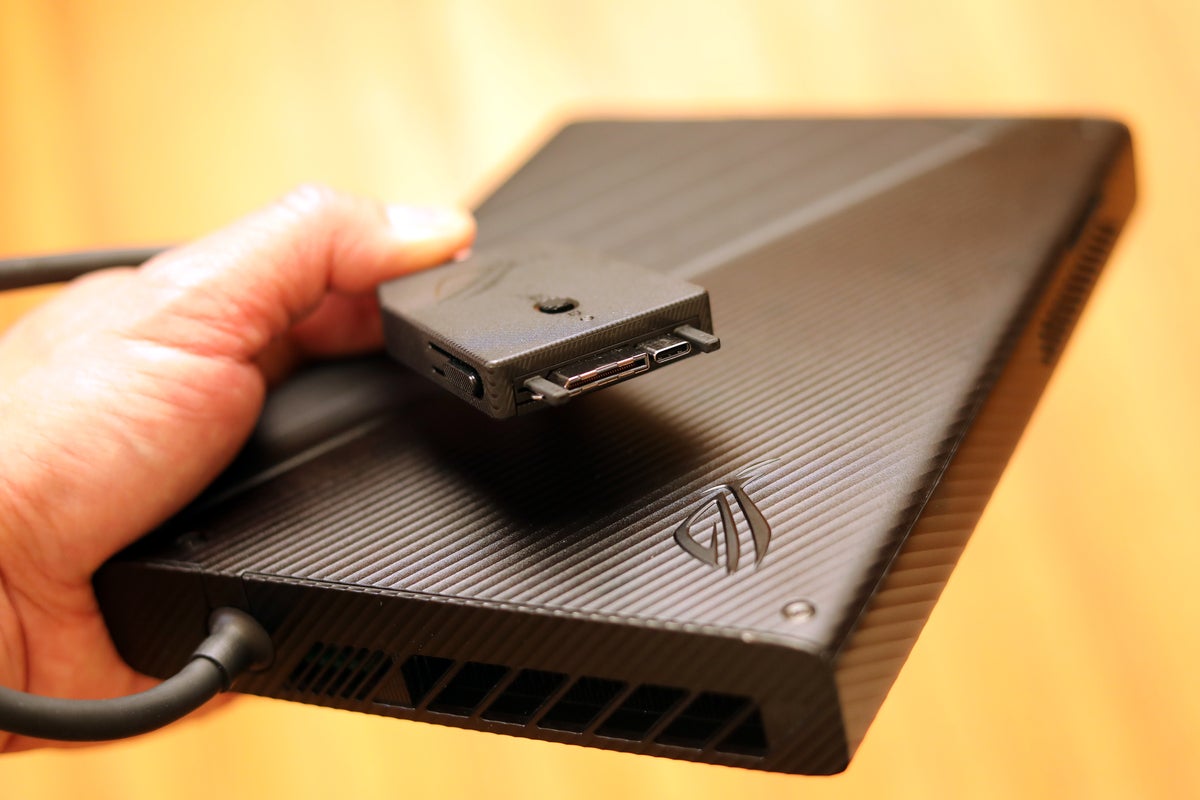 Gordon Mah Ung
Gordon Mah UngThe dongle on the XG Mobile is thicker than the laptop. The XG Mobile also features a nifty built-in kickstand so you can prop it up at an angle on the desk.
Those into open standards may complain that Asus should have done the work to integrate Thunderbolt into the ROG Flow X13 and XG Mobile and avoid using a proprietary connector. Asus maintains it did so because Thunderbolt’s x4 PCIe doesn’t have enough bandwidth to drive a GeForce RTX 3080. We’d have to agree, because even the x8 PCIe custom connector is just barely enough to drive it.
While the Ryzen 5000 CPUs only offer x8 PCIe Gen 3 bandwidth, one problem with using external graphics is you’re not only sending data to the GPU, you’re also bringing the rendered frames back from the GPU to be displayed on the laptop’s panel across that x8 connection.
One way to avoid that is simply to run a second display off of the eGPU. We did just that and saw about a 10- to 15-percent increase from the additional bandwidth. In some games, however, it can accomplish more. In Counter Strike: Global Operations, which runs at just under 300 fps using the laptop’s display, we saw it spike to 470 fps using a display hooked directly to the eGPU’s HDMI port. Clearly, the RTX 3080 Laptop can benefit from additional bandwidth.
One other thing we want to point out to potential buyers is that you lose access to the onboard GeForce GTX 1650 when you plug in the GeForce RTX 3080. That means you can’t use both for computing purposes. Asus said one benefit is the cooling for that GeForce GTX 1650 now goes to the CPU, and you should see a small performance increase.
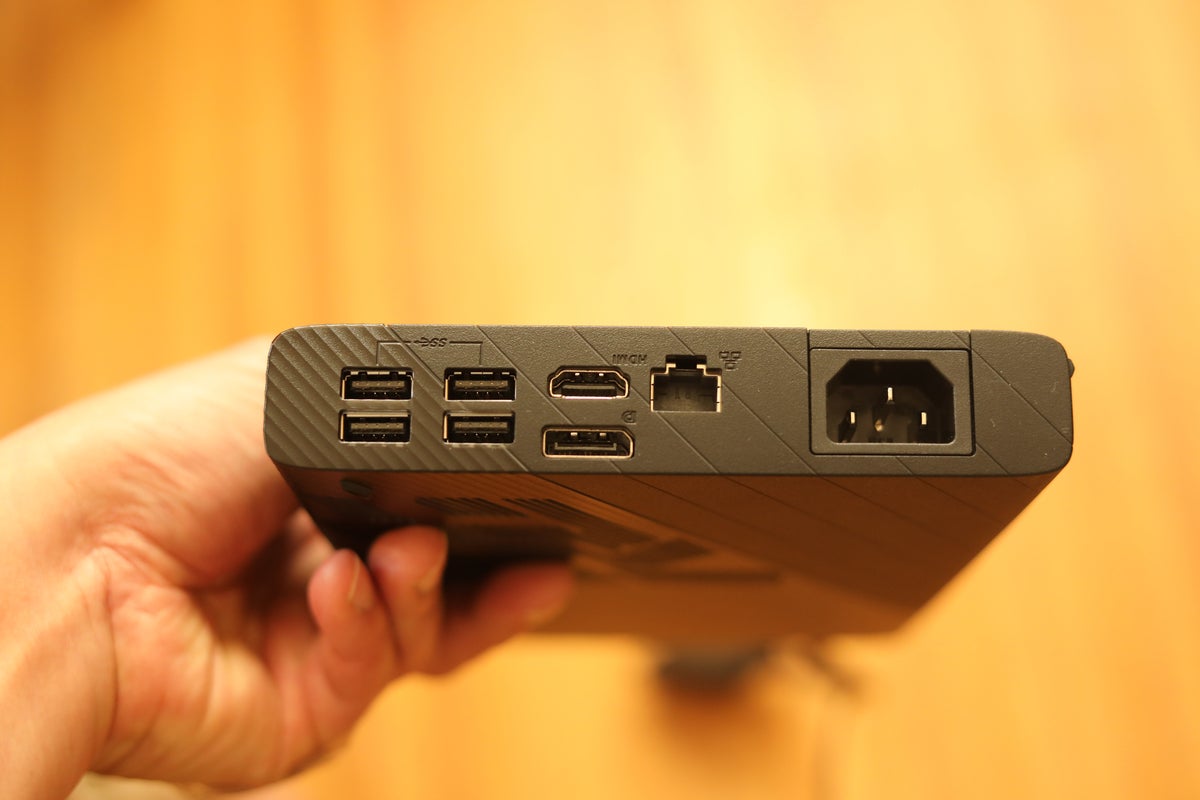 Gordon Mah Ung
Gordon Mah UngThe XG Mobile includes four USB-A ports, Gigabit ethernet, DisplayPort, and HDMI.
Keep reading to learn about CPU and GPU performance.
The Asus ROG Flow X13 is the most powerful tiny laptop you can buy, thanks to its companion eGPU that adds graphics performance. This modular setup has a few compromises, but it’s still a great choice for highly mobile users.
Pros
- High-end Ryzen 9 5980HS performance in a tiny laptop
- High-end GeForce RTX 3080 performance in a tiny laptop
Cons
- eGPU is cumbersome on the go
- Cover for eGPU port is flimsy

